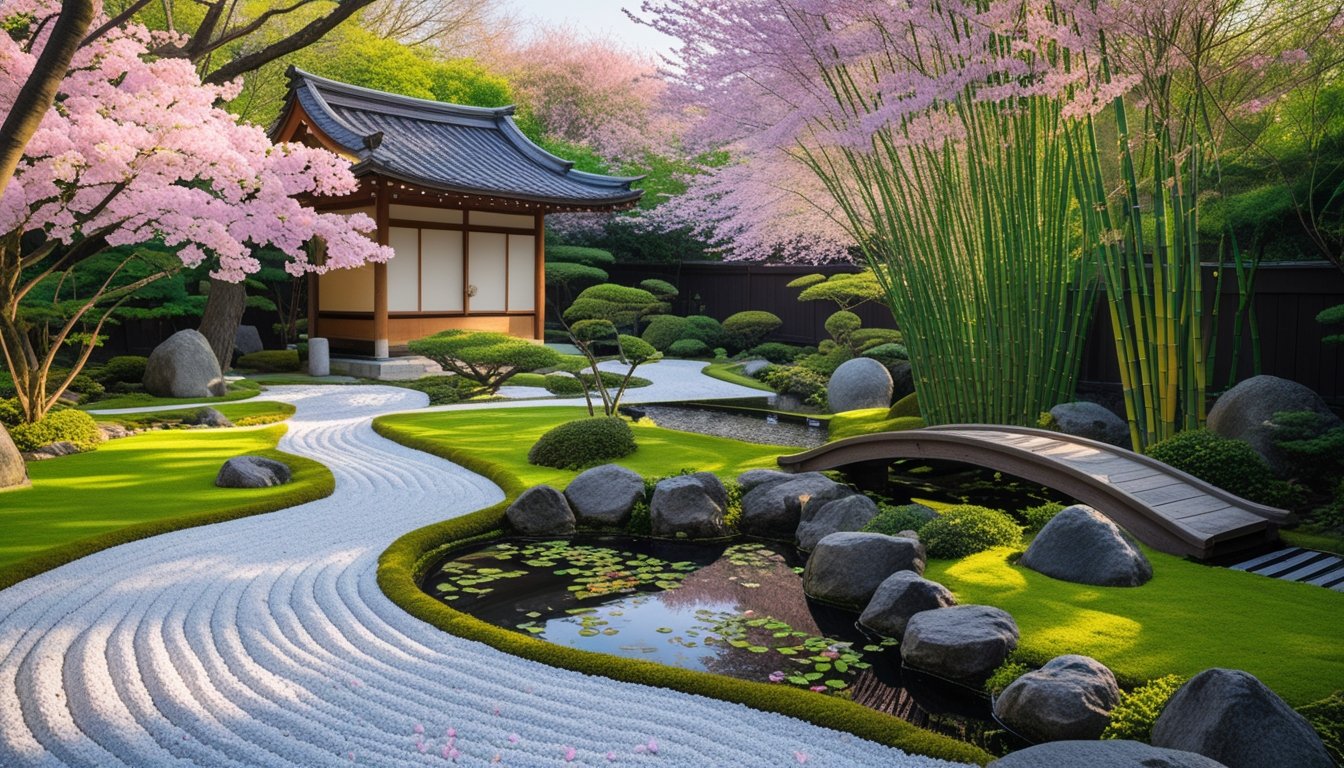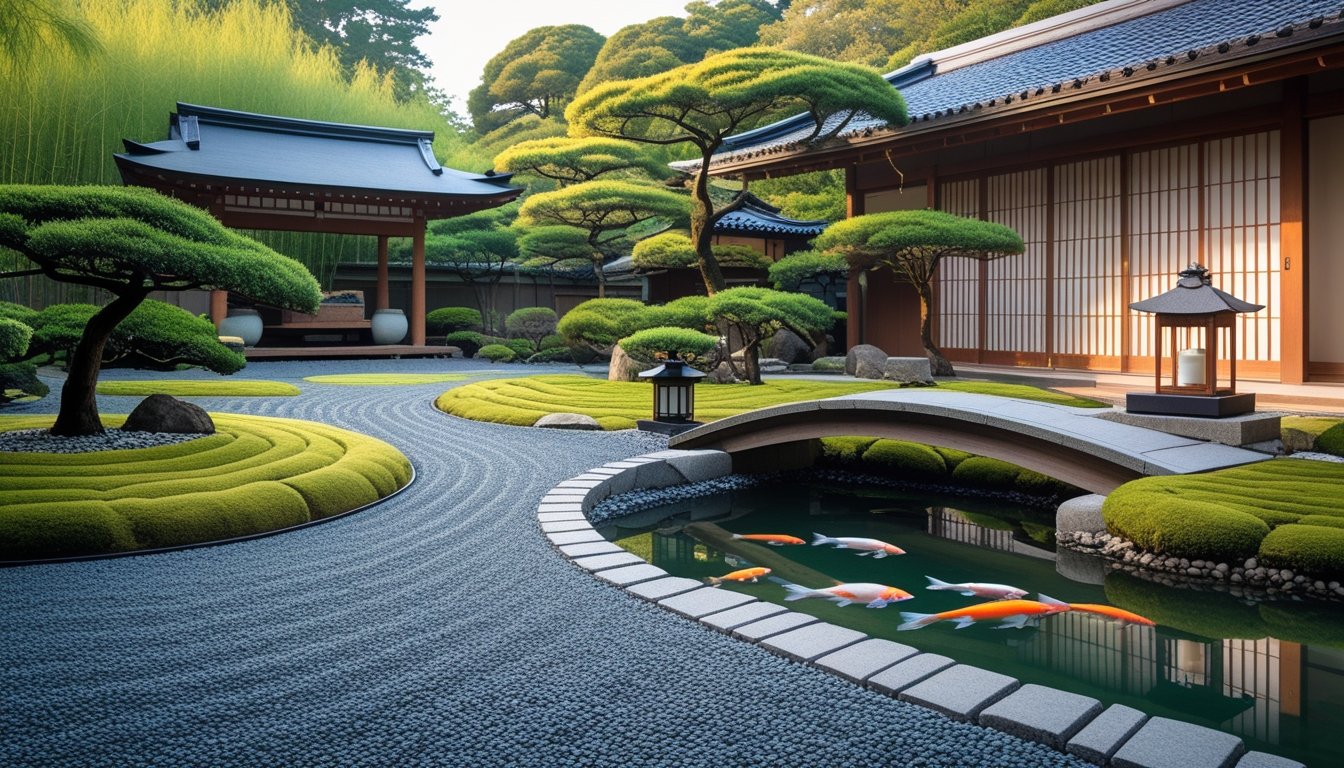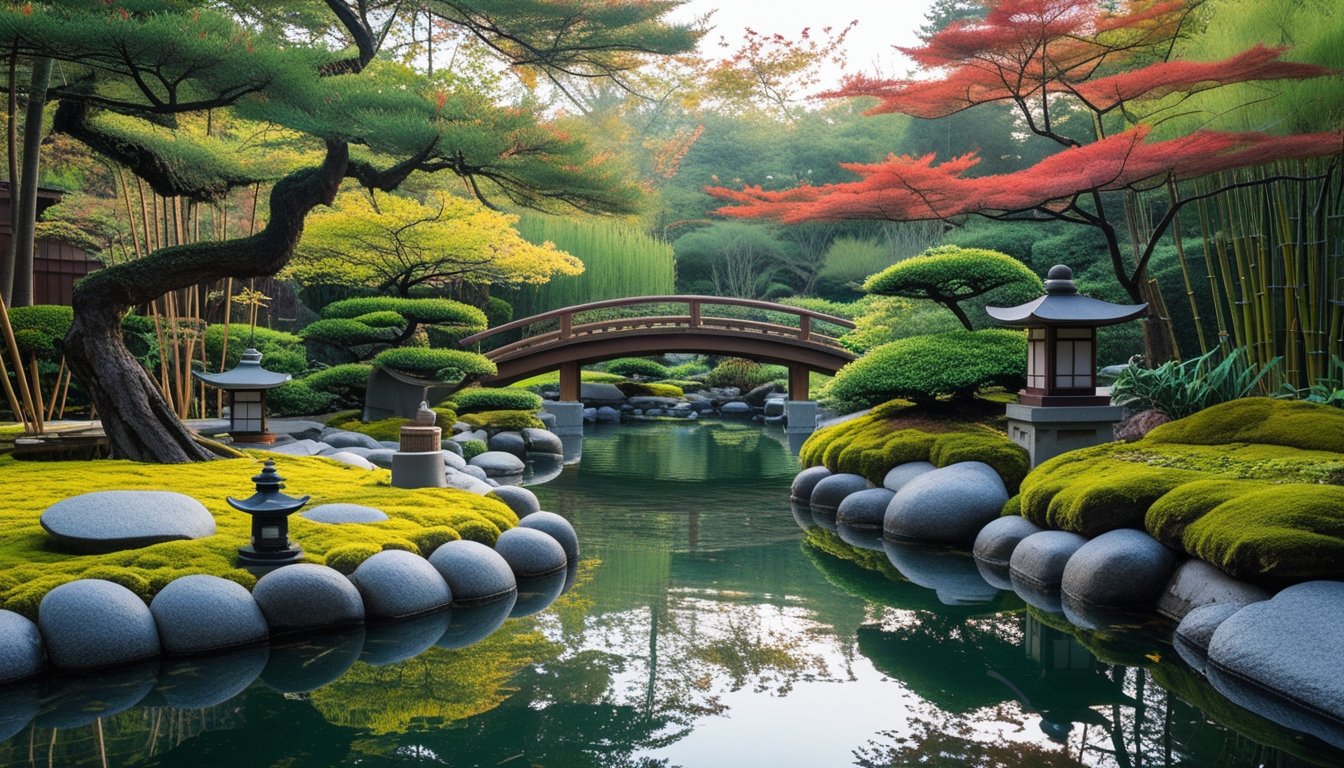Late updated: 14 Jul 2025 18:07
Written by: James Whitaker
Creating A Japanese-Inspired Tranquil Garden Retreat: A Guide to Serenity and Harmony
Creating a Japanese-inspired tranquil garden retreat offers an escape from the hustle and bustle of everyday life. Whether you have a sprawling backyard or a compact patio, introducing elements of Japanese garden design can transform your outdoor space into a serene oasis. By incorporating essential design principles like simplicity, balance, and mindfulness, we can create a harmonious sanctuary that promotes relaxation and reflection.

The art of Japanese gardening involves more than just selecting the right plants and stones. It's about crafting an environment that reflects nature’s inherent beauty and fosters a sense of peace. Water features, stepping stones, and well-placed plants not only enhance the aesthetic appeal but also contribute to a meditative atmosphere. In this blog post, we'll explore how these elements come together to create a peaceful retreat right outside our door.
In addition to visual beauty, a Japanese garden provides a sensory experience that engages all our senses. The gentle trickle of water, the textures of moss and stone, and the subtle fragrance of blooming flowers all contribute to an immersive and calming environment. Embracing these elements can lead us to a deeper connection with nature and a more profound sense of peace.
Key Takeaways
- Essential design principles include simplicity, balance, and mindfulness.
- Key features like water, stones, and plants enhance tranquillity.
- FAQs address common concerns about maintenance and space.
Core Design Principles for a Japanese-Inspired Tranquil Garden Retreat
Our emphasis is on amalgamating the serenity of nature with mindful design, creating a peaceful retreat that encapsulates traditional aesthetics. By focusing on key elements like natural materials, balance, and harmony, we can craft a minimalist Japanese garden that promotes contemplation and inner peace.
Essential Elements of Japanese Garden Design
In Japanese garden design, certain elements play a vital role in achieving tranquility. Water features, such as a small koi pond or a bamboo fountain, introduce a soothing auditory experience. Stones and gravel are fundamental, often used to symbolise mountains and rivers, thereby creating a miniature landscape. We often see different textures of stones, whether smooth river rocks or rugged boulders, to add visual interest. Plants, particularly evergreens like pines and maples, offer year-round beauty. Bonsai and pruned shrubs add structure and evoke discipline, key to Japanese aesthetics. Each element is carefully considered, from positioning to how it interacts with light and space, to create a cohesive and tranquil retreat.
Establishing a Sense of Balance and Harmony
Balance and harmony are central to Japanese garden ideas. We achieve this through asymmetry, which challenges Western preferences for symmetry. Instead of mirroring elements on either side, we employ subtle shifts in weight and form. A single large stone may be offset with a group of smaller ones, and pathways might meander rather than follow a straight line. These elements guide us through the garden, inviting pause and reflection. Plants and structures are arranged to draw the eye upward or downward, capturing various angles and focal points. By incorporating varying heights and depths, we create layers that add complexity and intrigue.
Integrating Natural Materials and Textures
Natural materials are quintessential in constructing a Japanese-inspired garden. Wood, often in the form of gates, benches, or bridges, adds warmth and contrast to the cooler tones of stone and gravel. Bamboo is a favourite, revered for its resilience and versatility. The tactile quality of stones and bamboo split and interwoven creates sensory engagement. Gravel forms the base, its texture providing both visual and tactile contrasts. Unlike conventional lawns, gravel paths are raked into geometric patterns, simulating waves or ripples, which change as sunlight and shadow alter throughout the day. This integration of textures fosters a seamless connection between the garden and nature.
Key Features and Signature Structures for Tranquillity

Our serene garden retreat will be accentuated by distinct elements that embody tranquility, harmony, and aesthetic balance. These components include carefully placed pathways, calming water features, iconic architectural accents, and lush plantings.
Creating Pathways with Stepping Stones and Gravel
Stepping stone paths invite a sense of journey and contemplation. We might use natural stones, creating meandering routes that guide visitors through the garden.
A gravel pathway can be added for texture, helping to define spaces within the garden. Gravel allows for water drainage and adds a soft crunch underfoot. Both stepping stones and gravel blend seamlessly with nature, encouraging a gentle exploration reminiscent of traditional Japanese gardens.
Water Features: Ponds, Koi Ponds, and Tsukubai
Water features are central for evoking calm. Our garden could include a pond, where the reflective surface offers visual serenity. Koi ponds add life and movement, as koi fish are not only beautiful but symbols of prosperity and good fortune.
A tsukubai, a stone basin typically used for ritual purification, can enhance the sensory experience with its trickling water sound. These elements combine to create a soothing oasis.
Iconic Accents: Stone Lanterns, Bridges, and Tea Houses
Stone lanterns, with their sculptural forms and subtle illumination, have been a staple in Japanese gardens. We might place them strategically to catch the eye in various garden sections.
Bridges, such as an arched wooden bridge, link different areas and invite crossing. A tea house or pavilion offers a space for relaxation, contemplation, or hosting a traditional tea ceremony amidst the natural beauty.
Lush Plantings: Moss Gardens, Japanese Maples, and Seasonal Plants
Incorporating lush greenery is vital. A moss garden introduces a velvety carpet of green, thriving in shaded areas and evoking a sense of timelessness.
Japanese maples provide stunning autumn foliage and architectural beauty with their delicate leaves. Seasonal plants, like cherry blossoms, showcase nature's cycles and add colour and dynamism. By using varied textures and colours, we can orchestrate a lively yet peaceful garden tapestry.
Frequently Asked Questions

Creating a Japanese-inspired garden involves understanding essential elements like gravel, plants, and water to evoke tranquility. Key features and careful planning are necessary for authenticity. Let's explore common questions to help you design your serene garden space.
What are essential elements to include in a cost-effective Japanese garden?
In a budget-friendly Japanese garden, focus on incorporating natural elements like rocks and gravel, which are foundational. Bamboo plants and stone lanterns are both affordable and authentic. Use existing plants or native species to keep costs down. Minimalism is key, reducing the need for expensive features.
What steps are involved in constructing a Japanese gravel garden?
Begin with selecting the location, ideally a spot that receives partial sunlight. Clear the area and lay a weed membrane to minimise maintenance. Spread a layer of gravel, offering patterns by raking it into designs. Include larger stones for structure and consider adding a focal point like a small pagoda.
How can one integrate Zen concepts into a garden design?
Incorporate elements that promote contemplation and mindfulness, such as a simple rock arrangement or sand patterns. Introduce stillness with water features that invite reflection. Prioritise open spaces that encourage peaceful wandering. Select plants with calming colours like greens and blues, enhancing the serene atmosphere.
What are the key considerations for building an authentic Japanese garden?
Prioritise harmony and balance among elements. Use natural materials and ensure there is asymmetry in design, which is a hallmark of authenticity. Water features should mimic nature's sounds, while pathways should guide visitors gently. Integrate cultural symbols like bamboo fences to enhance the garden's authenticity.
Can you suggest tips for cultivating a Japanese-style dry riverbed in a garden?
Choose an area with a slight slope for a natural look. Place larger rocks to imitate riverbanks and flows. Fill the riverbed path with pebbles or gravel arranged to suggest the movement of water. Complement with surrounding foliage, using plants typical in Japanese landscapes like hostas or ferns.
What features are crucial for establishing a Japanese tea garden?
Include a tea house or a simple pavilion as a central feature. Winding paths leading to the pavilion invite exploration. Construct stepping stone paths, carefully placed to encourage slow, deliberate walking. The garden should offer secluded spaces for quiet reflection, maintaining an intimate atmosphere.
